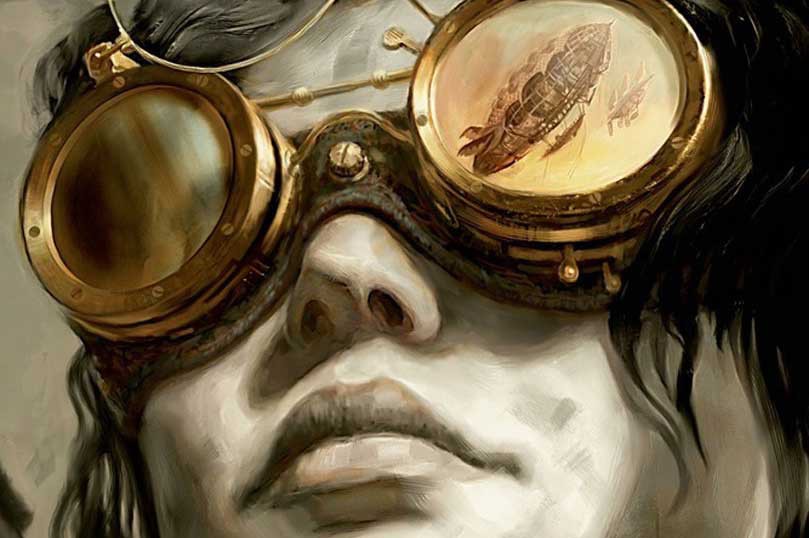Welcome to Throwback Thursdays on the Tor/Forge blog! Every other week, we’re delving into our newsletter archives and sharing some of our favorite posts.
Fiddlehead, the fifth book in Cherie Priest’s Clockwork Century series, is here! To celebrate the publication of Cherie’s latest steampunk adventure, we’ve reached back in our archives to October 2009, when she shared the origins of Boneshaker, the first book in her rollicking alternative history steampunk series. Enjoy this blast from the past, and be sure to check back every other Thursday for more!
Steampunk: The Devil Wears Goggles
Written by Cherie Priest
Pick a genre book—any genre, any book—and the cover will probably provide a satisfactory shorthand for where it ought to be shelved. Wizards, elves, and knights? You’ve got yourself a fantasy novel. Fangs and a matte black background? Horror. And so forth.
But a couple of years ago when I began working on Boneshaker, I couldn’t name many meaningful signifiers that screamed out “steampunk.” Oh there were goggles, sure—but no one seemed to have a good explanation for what the goggles were for apart from leaving a sweaty crease above your eyebrows. The delightful preponderance of Victorian garb was striking and fun, but the gas masks left me scratching my head. Gears made sense, even on top hats, I supposed. Watch chains were shiny, so, you know. Cool.
However, the odd goggle-wearing, retro-dressing, hat-decorating pocket-watch toter might be mistaken for goth at a glance. In fact, my friend Jess Nevins once repeated that he’d heard steampunk is what happens when goths discover brown. While this assessment oversimplifies the matter, it’d be silly to pretend that there isn’t a great deal of overlap between the two scenes.
So. As an aging quasi-goth with a deep-seated interest in steampunk, I wanted to take an honest stab at the genre—giving it legs, or at least giving its stranger elements a literary excuse to complement the fashion imperative.
Boneshaker began this way, as an idle exercise—a noodling experiment. But like so many projects, I had no idea when I began exactly how far it would take me… or how weird it would get.
I started out with only a few concrete demands: I wanted this story to be American, and not London gas-lamp; I wanted to write about people, not about a world-setting; but I needed for the people to be symptomatic of that world-setting.
Also, I wanted zombies.
The world came first. Nineteenth-century America was strange enough without any interference from yours truly, but I imagined it as if the Civil War had lingered—and the west was not incorporated, or organized. I thought of Texas, and how it might have remained a republic. I wondered how the Confederacy could’ve held on, and how the Union would’ve restructured, and what the war would’ve looked like decades down the line—when most of the men who’d started fighting it were dead, and their sons were fighting over grievances they were too young to remember firsthand.
Piece by piece the Clockwork Century came together, and on that foundation I found people with stories to tell. I found former slaves and air pirates, criminal overlords and Native American princesses. I found a deranged scientist or two. And eventually I found Briar Wilkes—the widow of a madman, mother of a runaway, and daughter of a dead folk hero.
Boneshaker is her story. And like steampunk itself, Boneshaker is about rummaging through the wreckage of the past and finding something worth salvaging, and maybe even worth celebrating. So if you take a chance on my new book, I do hope you enjoy it. If it’s half as much fun to read as it was to write, I’ll consider the whole noodling experiment a grand success.
This article is originally from the October 2009 Tor/Forge newsletter. Sign up for the Tor/Forge newsletter now, and get similar content in your inbox twice a month!






















